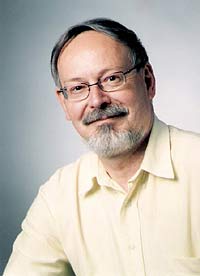 The prolific linguist and cultural scientist HARALD HAARMANN continues to produce a broad range of publications that have special significance within the field of Archaeomythology. Dr Haarmann is Vice President of the Institute of Archaeomythology and Director of its European branch. Here are samples of his most recent offerings with links to recorded dialogues and interviews inspired by his work and the pioneering research of Lithuanian-American Archaeologist Marija Gimbutas.
The prolific linguist and cultural scientist HARALD HAARMANN continues to produce a broad range of publications that have special significance within the field of Archaeomythology. Dr Haarmann is Vice President of the Institute of Archaeomythology and Director of its European branch. Here are samples of his most recent offerings with links to recorded dialogues and interviews inspired by his work and the pioneering research of Lithuanian-American Archaeologist Marija Gimbutas.
Video: “Dialogue of two hearts (LaBGC & Harald Haarmann): Talking about peace in Europe” (April 12, 2018 – in English).
In this dialogue (filmed in Luumaki, Finland in April, 2018), the linguist and cultural scientist Harald Haarmann speaks with Barbara von Stackelberg (LaBGC), a leading figure in worldwide humanitarian projects, about essential values for western civilization. These values concern communal cohesion and gender cooperation rooted in the commonwealth of the interconnected regions Old Europe (the Danube civilization).
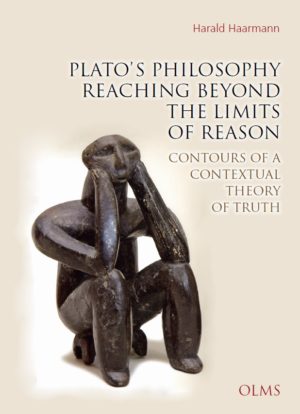
PLATO’S PHILOSOPHY REACHING BEYOND THE LIMITS OF REASON – Contours of a contextual theory of truth (Olms, 2017).
Plato is one of the most influential philosophers of all time who decisively shaped the profile and canon of western philosophy. While he is commonly viewed as a purely rational philosopher, Plato was also an expert in approaching the non-rational in the form of mythology, among other approaches. He has been called a “mythmaker“ and a “mythologist.“ He was a visionary who dared to explore the realm of the non-rational in a systematic and disciplined way. In an overall comparison, Plato‘s philosophical enterprise strives for a comprehensive perspective on the organic whole. The expression “Gestalt“ seems to come closest to describing this wholeness.
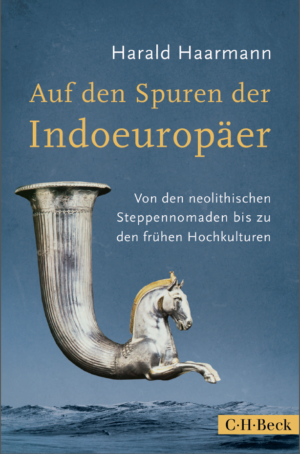
AUF DEN SPUREN DER INDOEUROPÄER – Von den neolithischen Steppennomaden bis zu den frühen Hochkulturen (C. H. Beck, 2016).
Seit mehr als 3000 Jahren werden von Indien über Persien bis nach Europa indoeuropäische Sprachen gespro-chen. Wo liegen die Ursprünge dieser Sprach-familie? Wie und wann sind die unterschiedlichen Sprachzweige entstanden? Der renommierte Indoger-manist Harald Haarmann schildert anschaulich, was wir heute über die Entstehung der indoeuropäischen Sprachen und Kulturen und ihre frühen Verbreit-ungswege wissen.
Dabei gelingt es ihm eindrucksvoll, linguistische Befunde mit archäologischen Erkenntnissen und neuesten humangenetischen und klimageschicht-lichen Forschungen in Beziehung zu setzen. Über sprachliche Verwandtschaften hinaus zeigt er, welche Wirtschaftsweisen, Gesellschaftsformen und religiösen Vorstellungen die frühen Sprecher indoeuropäischer Sprachen vom östlichen Mittelmeer bis zum Indus gemeinsam hatten. Besondere Beachtung finden dabei die Verschmelzungsprozesse mit vorindoeuropäischen Sprachen und Zivilisationen. So entsteht ein faszinie-rendes Panorama der frühen “indoeuropäischen Globalisierung” vom Ende der letzten Eiszeit bis zu den frühen Hochkulturen in Griechenland, Kleinasien, Persien und Indien.
Video: “Indoeuropäer” ~ Jonas Hopf interviews Harald Haarmann after the publication of AUF DEN SPUREN DER INDOEUROPÄER (April 19, 2016 – in German).
In this interview, Harald Haarmann, discusses the Indo-European homeland theory of Lithuanian/American archaeologist Marija Gimbutas (1921-1994), who determined the origin of Proto-Indo-European speakers to be in the steppe region north of the Black Sea. Her theory traces their out-migrations into Europe between c. 4400-2500 BCE which led to the end of Old European social cohesion and the rapid spread of Indo-European languages and cultures. After a period of scientific controversy, her theory has been acknowledged as correct by the initiator of the Anatolian hypothesis, Colin Renfrew.
PLATO ON WOMEN – Revolutionary ideas for gender equality in an ideal society (Cambria, 2016).
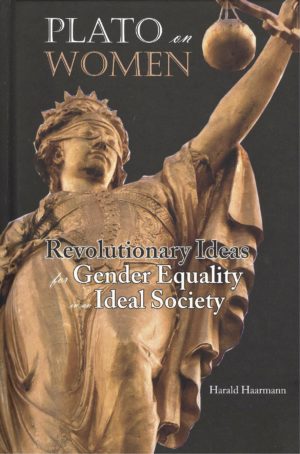 Plato (ca. 427 – ca. 347 BCE) has been referred to as a “patriarchal” writer by some feminists while others characterize the philosopher’s approach to gender issues as “unambiguously feminist.” In contrast to these polarized judgements, Harald Haarmann presents an internal reconstruction of the historical realities and cultural conditions during Plato’s lifetime while avoiding the projection of modern biased positions and stereotypes into antiquity.
Plato (ca. 427 – ca. 347 BCE) has been referred to as a “patriarchal” writer by some feminists while others characterize the philosopher’s approach to gender issues as “unambiguously feminist.” In contrast to these polarized judgements, Harald Haarmann presents an internal reconstruction of the historical realities and cultural conditions during Plato’s lifetime while avoiding the projection of modern biased positions and stereotypes into antiquity.
In this study, Plato’s ideas on women’s roles are viewed against the zeitgeist of gender issues in Greek society of classical antiquity. This poses the challenge to reliably reconstruct the social conditions of women in Greek society of the fifth and fourth centuries BCE, by reconstructing their living-conditions and their broader implications under Athenian democracy.
MYTHS AS SOURCE OF KNOWLEDGE IN EARLY WESTERN THOUGHT – The quest for historiography, science and philosophy in Greek antiquity (Harrassowitz, 2015).
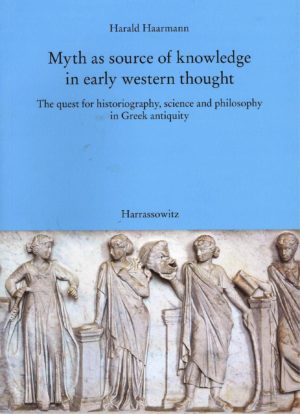
From the Enlightenment in the 18th century, myth as a potential source of knowledge was disregarded in favor of the cult of reason. The monopoly of truth-finding through pure rationalisation was asserted, promoting reason in opposition to myth. This bias has privileged reason as a mode of enquiry to the present day. In contrast to Enlightenment assumptions, the pre-Socratic philosophers did not set myth (mythos) and reason (logos) in opposition to each other. They benefited from both as differing modes of enquiry, each possessing its own value. The present study offers a corrective to traditional clichés about intellectual life in ancient Greece. The work proposes, and aims to reconstruct, a mental landscape in which myth and reason connect and vividly interact, in which mythos and logos are intertwined in the terminological network of the ancient Greek language.
ROOTS OF ANCIENT GREEK CIVILIZATION – The Influence of Old Europe (McFarland, 2014).
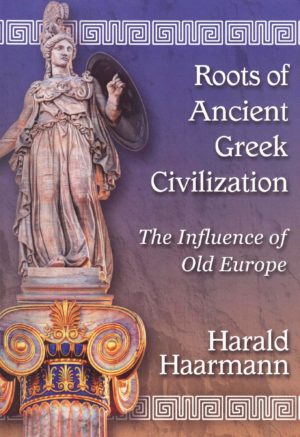
Contrary to a prevalent belief of the Western world, that democracy, agriculture, theater and the arts were the attainments of Classical Greek civilization, these were actually a Bronze Age fusion of earlier European concepts and Hellenic ingenuity. This work considers both the multicultural wellspring from which these ideas flowed and their ready assimilation by the Greeks who embraced these hallmarks of civilization and refined them to the level of sophistication that defines classical antiquity.
ANCIENT KNOWLEDGE, ANCIENT KNOW-HOW, ANCIENT REASONING – Cultural memory in transition from prehistory to classical antiquity and beyond (Cambria, 2013).
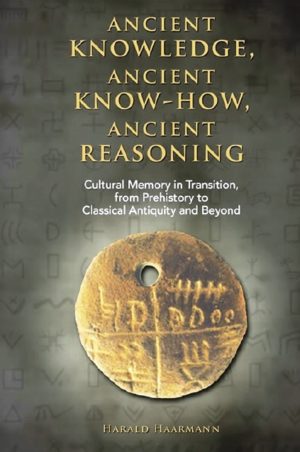
This book illuminates the acquisition of knowledge and its underlying meanings from the Neolithic to the modern era. Spiritual knowledge is at the heart of this work, which views myth and religion encoded in Neolithic female figurines and revived by modern artists. This study employs the knowledge and insights of the field of archaeomythology, which ties together information from archaeology, DNA studies, mythology, anthropology, classical studies, ancient language studies, and linguistics. This work offers resolutions to questions regarding antiquity, shedding light upon several phenomena, from the function of Stonehenge, to Eurasian religious beliefs and mythological motifs, to the cultures of Old Europe (Neolithic southeastern Europe) and ancient writing systems. The book further discusses the legacy of Old Europe in Minoan and Greek cultures, Old European substrate vocabulary in Greek, and the preservation of Neolithic spirituality in Modern Art.
Video: “Harald Haarmann die “Donauzivilisation” – alt Europa (October 28, 2012 – in German).
This interview was recorded during the 2012 international book fair in Frankfurt. Harald Haarmann, presents an overview of the development of the world’s oldest high culture, Old Europe, and a summary of the contents of his book Das Rätsel der Donauzivilisation (Munich: C.H. Beck 2011), now in its 3rd edition(2017), with translations into Bulgarian and Romanian.